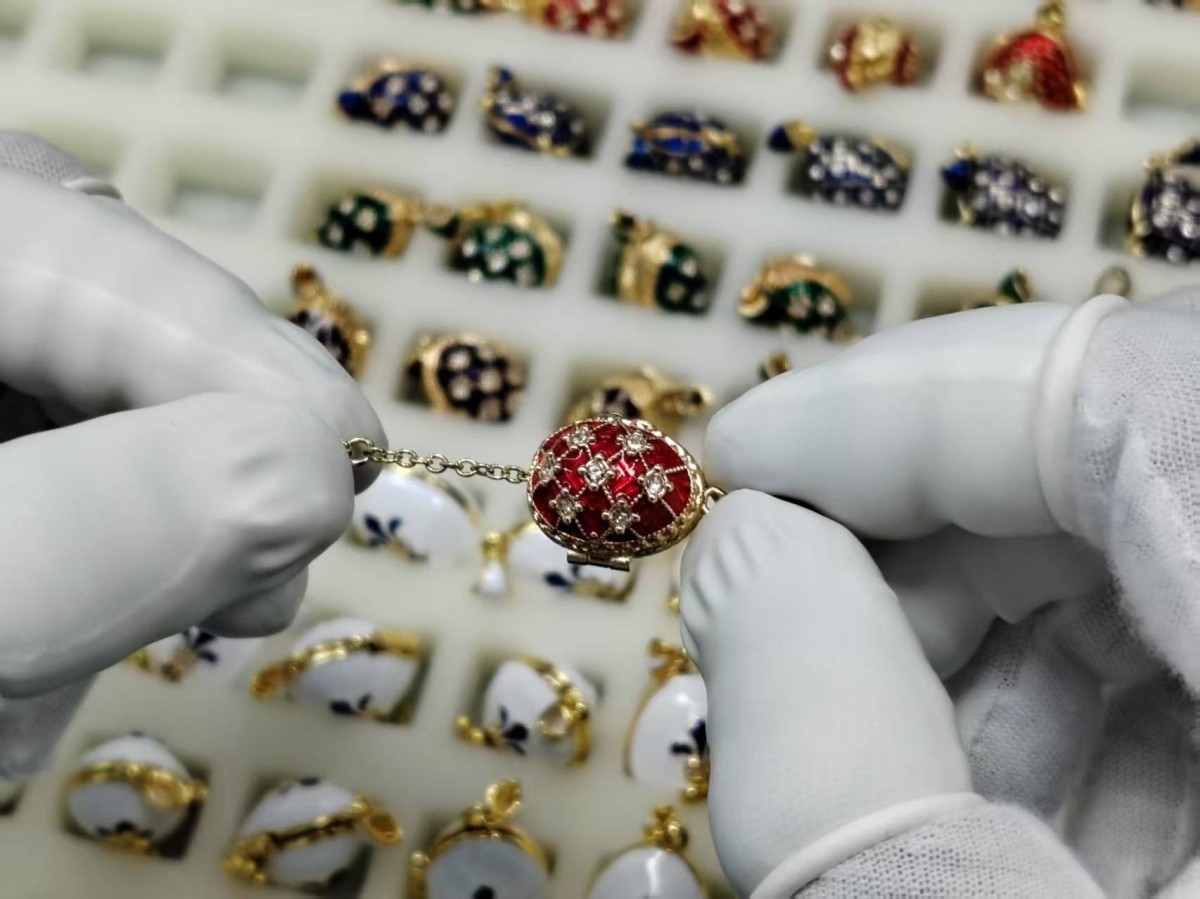Behind every exceptional jewelry piece lies a sophisticated production journey where artisan skill meets precision engineering. Understanding the Yaffil Jewelry Production Process reveals how a Leading Jewelry Manufacturing Factory transforms raw materials and creative concepts into finished pieces that grace retail displays worldwide. In an industry where 3D printing adoption has grown 34% and custom orders now represent 18% of fine jewelry sales, manufacturing excellence requires balancing traditional craftsmanship with technological innovation. Yaffil’s approach to production—honed over nearly two decades serving prestigious international brands—exemplifies this balance, demonstrating how systematic processes create consistent quality across diverse jewelry categories.
Manufacturing Excellence in Modern Jewelry Production
The global jewelry market, projected to reach $578 billion by 2033, demands manufacturers who can deliver both aesthetic appeal and structural integrity. Production processes determine whether pieces maintain their beauty through years of wear or deteriorate after months. They influence cost structures, lead times, quality consistency, and ultimately, brand reputation.
Modern jewelry manufacturing has evolved dramatically. Advanced technologies like 3D printing and computer-aided design now coexist with centuries-old techniques like stone setting and hand finishing. The Most Popular Jewelry Materials in Recent Years—including stainless steel, lab-grown diamonds, and innovative alloys—require specialized processing knowledge that combines material science with artistic vision.
Yaffil’s Dongguan facilities embody this evolution. Located within China’s renowned manufacturing corridor, the company has developed comprehensive production capabilities spanning from initial design through final quality verification. This integrated approach positions Yaffil among manufacturers serving the Most Popular Jewelry Brands in Recent Years, where production consistency directly impacts brand equity.

Design Development and Digital Prototyping
The Yaffil Jewelry Production Process begins long before metal meets mold. Design development establishes the foundation for successful manufacturing, where creative vision aligns with technical feasibility.
Yaffil’s design studios employ advanced CAD (Computer-Aided Design) software that transforms sketches into precise three-dimensional models. This digital prototyping stage allows designers and clients to visualize pieces from every angle, identifying potential issues before production investment occurs. A pendant’s proportions, a ring’s structural weak points, or a bracelet’s clasp functionality all become apparent in virtual form.
This technology-enabled design phase reflects broader industry trends. The adoption of 3D printing in jewelry has grown significantly, with custom jewelry orders facilitated by this technology now representing substantial market share. Digital design tools enable complexity that would be impractical or impossible through traditional methods—intricate lattice structures, organic forms mimicking natural patterns, or precisely engineered mechanisms for movable components.
Beyond technical advantages, digital prototyping accelerates iteration. Clients can review and refine designs quickly, reducing the weeks traditionally required for physical prototyping. This responsiveness proves particularly valuable for brands tracking the Most Popular Jewelry Styles in International Markets, where fashion cycles demand rapid design development.
Material Sourcing and Quality Verification
Raw material quality fundamentally determines finished jewelry performance. Yaffil maintains relationships with verified suppliers across multiple material categories, ensuring consistent access to metals, gemstones, and components meeting specifications.
The material verification process begins upon delivery. Incoming precious metals undergo purity testing confirming they match ordered specifications. Gemstones receive evaluation for clarity, color, cut quality, and authenticity. Base metals and alloys are inspected for composition and surface characteristics. This initial quality gate prevents defective materials from entering production.
Material sourcing reflects current market dynamics. Lab-grown diamonds, which reached $12.8 billion globally in 2025, now complement natural stone options. Recycled precious metals appeal to environmentally conscious brands. Stainless steel’s durability and hypoallergenic properties have driven its market beyond $17 billion. As a Leading Jewelry Manufacturing Factory, Yaffil’s material expertise spans these evolving categories, helping clients select options balancing aesthetic goals, durability requirements, and cost parameters.
Metalworking and Fabrication Stages
Once designs are finalized and materials verified, physical production begins. Metalworking encompasses several specialized techniques depending on design requirements:
Casting: For designs with complex three-dimensional forms, lost-wax casting remains fundamental. A wax model—created either by hand or through 3D printing—gets surrounded by investment material. When heated, the wax melts away, leaving a cavity into which molten metal flows. This ancient technique, refined through modern temperature control and vacuum-assisted casting, produces intricate details with excellent surface quality.
Stamping and Die-Striking: High-volume production often employs stamping, where metal sheets pass through dies that cut or shape them. This efficient method ensures consistency across large quantities while maintaining precise dimensions.
CNC Machining: Computer Numerical Control equipment removes material from solid metal blocks, creating forms with exceptional precision. This subtractive manufacturing method suits designs requiring exact tolerances or when working with particularly hard materials.
Hand Fabrication: Traditional bench work remains irreplaceable for certain applications. Skilled artisans solder, form, texture, and finish pieces using techniques passed through generations. This hand work often appears in final assembly, where components come together requiring judgment that machines cannot replicate.
The metalworking stage transforms raw materials into recognizable jewelry forms, though significant work remains before pieces reach completion.
Stone Setting Precision
For jewelry incorporating gemstones, setting represents a critical production phase requiring both technical skill and aesthetic judgment. Stones must sit securely—able to withstand daily wear without loosening—while remaining visually prominent.
Setting methods vary based on design intent:
Prong Settings: Metal prongs extend from the jewelry body, gripping stone edges. This classic approach maximizes stone visibility and light entry, enhancing brilliance. Prong placement and height require precision; too loose and stones risk loss, too tight and they may crack under pressure.
Bezel Settings: A metal rim surrounds the stone’s perimeter, offering maximum security. This protective approach suits active lifestyles, though it covers more stone surface than prong settings.
Pavé Settings: Multiple small stones set close together create diamond-encrusted surfaces. Tiny beads of metal hold each stone, requiring meticulous work to achieve even coverage and secure mounting.
Channel Settings: Stones sit in grooved channels with metal edges securing them on opposite sides. This flush mounting protects stones while creating smooth, continuous surfaces.
Yaffil’s stone-setting department employs specialists trained in these diverse techniques. Their expertise ensures secure mounting across the varied styles that appeal to the Top Ten Jewelry Brands by International Sales, from classic solitaires to contemporary multi-stone designs.
Surface Treatment and Finishing
After fabrication and stone setting, pieces undergo surface treatments establishing their final appearance. This stage dramatically influences perceived quality and durability.
Plating: Precious metal plating applies thin layers of gold, rhodium, rose gold, or other finishes over base metal foundations. Electroplating precisely controls thickness and uniformity, achieving luxury aesthetics at accessible price points. Plating quality—measured in microns of coverage—determines how long finishes maintain their appearance before requiring renewal.
Polishing: Various polishing stages smooth surfaces and create desired sheens. Initial polishing removes fabrication marks. Successive stages with progressively finer abrasives develop mirror-like finishes. Some designs intentionally retain textured or matte surfaces for visual contrast.
Oxidation and Patination: Controlled oxidation creates darkened accents emphasizing design details. This technique adds depth and vintage character to pieces, particularly popular in silver jewelry.
Surface finishing quality separates professional jewelry from amateur work. Yaffil’s finishing specialists understand how different materials and design elements require tailored approaches, ensuring consistent results across production runs.
Quality Control Integration
Rather than relying solely on final inspection, the Yaffil Jewelry Production Process integrates quality checkpoints throughout manufacturing. This systematic approach identifies issues early when corrections remain straightforward and economical.
Post-casting inspection examines dimensional accuracy and surface quality. Stone-setting verification ensures secure mounting and proper alignment. Pre-plating checks confirm adequate surface preparation. Post-plating evaluation verifies finish consistency and thickness. Final inspection comprehensively assesses functionality, appearance, and specification conformity.
This multi-stage verification reflects best practices among manufacturers serving demanding clients. Quality documentation provides traceability and accountability—essential for brands whose reputations depend on consistent product excellence.


Packaging and Presentation
Production concludes with packaging that protects jewelry during shipping while presenting pieces attractively upon arrival. Custom packaging options accommodate brand-specific requirements, from minimal protective pouching to elaborate presentation boxes with branded elements.
Proper packaging prevents damage during transit—a consideration particularly important for international shipments. Anti-tarnish materials protect silver and certain plated finishes. Secure cushioning prevents scratching or impact damage. Clear labeling facilitates customs clearance and inventory management.
Production Scalability and Flexibility
A distinguishing characteristic of Yaffil’s manufacturing approach involves accommodating diverse order profiles. Small emerging brands receive comparable attention to established accounts, with production systems flexibly handling varying volumes.
This scalability stems from efficient workflow management. Production planning sequences orders logically, grouping similar techniques to optimize equipment utilization and reduce changeover times. Cross-trained staff can shift between departments as workload demands, maintaining consistent throughput.
For brands experiencing growth, manufacturing partnerships that scale alongside demand prove invaluable. Yaffil’s infrastructure supports this progression, from initial small-batch orders through high-volume seasonal production.
Continuous Process Improvement
Manufacturing excellence requires ongoing refinement. Yaffil regularly evaluates production processes, identifying opportunities for enhanced efficiency, improved quality, or expanded capabilities.
Client feedback informs these improvements. When brands identify challenges or suggest enhancements, Yaffil’s team assesses feasibility and implements beneficial changes. This responsive approach strengthens partnerships while advancing manufacturing capabilities.
Industry developments also drive evolution. New materials, emerging technologies, or changing market preferences require adapting production methods. Yaffil’s commitment to staying current ensures clients benefit from manufacturing advances that enhance product quality or competitive positioning.
Building Through Manufacturing Partnership
The Yaffil Jewelry Production Process represents more than sequential manufacturing steps. It embodies a comprehensive approach where technical expertise, quality commitment, and collaborative partnership converge to create jewelry that meets exacting standards.
For brands evaluating manufacturing partners, understanding production processes reveals capabilities that directly impact product quality, cost efficiency, and time-to-market. Yaffil’s integrated approach—from design development through final quality verification—demonstrates how a Leading Jewelry Manufacturing Factory delivers consistent results across diverse jewelry categories and order volumes.
Discover how Yaffil’s production expertise can support your jewelry brand at https://www.yaffiljewellery.com/
Post time: Nov-05-2025
